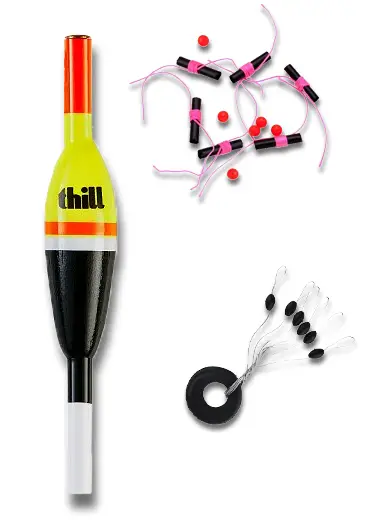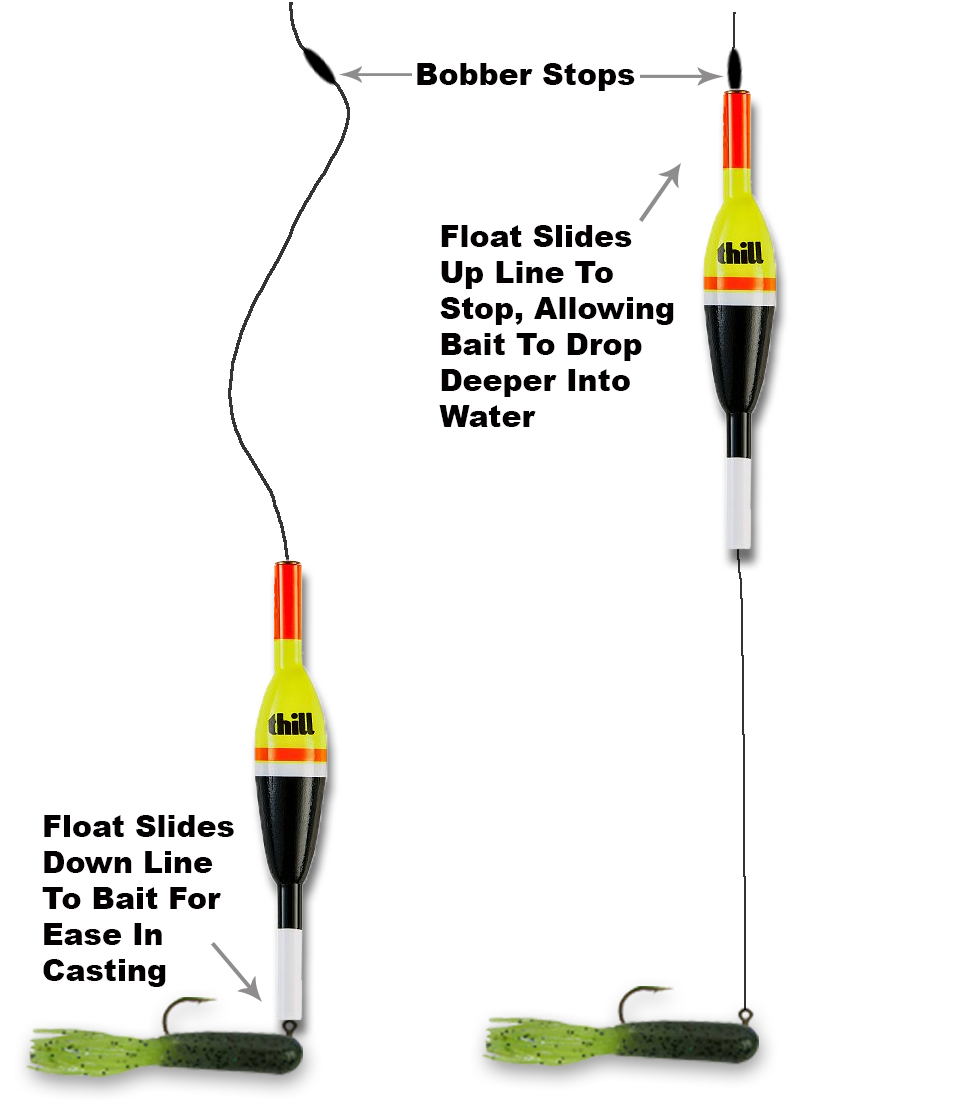Slip Float vs. Bobber (4 of 5)
One of the significant advantages of shore fishing is being able to not only bring the kids out on a day trip but to have them participate in the activity of fishing.
One of the most exciting ways to catch these fish is with the good ol’ red and white bobber. The problem, though, is that dad must keep casting and re-casting each kid’s rigs out because of the awkwardness. If there is a necessary (depending on conditions) three feet of line between the bobber and the bait, kids will have a tough time handling that kind of setup.
Enter the slip float.

A slip float does the same thing as the original red and white bobber, but in many instances, it does it more efficiently and effectively.
The obvious difference in these two float setups is the absence of line between the float and bait with the slip float rigging. With the float being directly against the bait (jig and live bait, jig and plastic, etc.), even a kid with limited casting experience can quickly learn how to fire out this rig.
For the more experienced, a slip float is an excellent tool to fish various depths (by simply changing the bobber stop location on the line). One can effectively fish one to two feet of water, all the way down to ten feet of water (and deeper, if need be).

If you fish from shore and you like using bobbers, get yourself some slip floats—they’re awesome!
Continue to the last page for the conclusion of our five Shore Fishing Tips!
